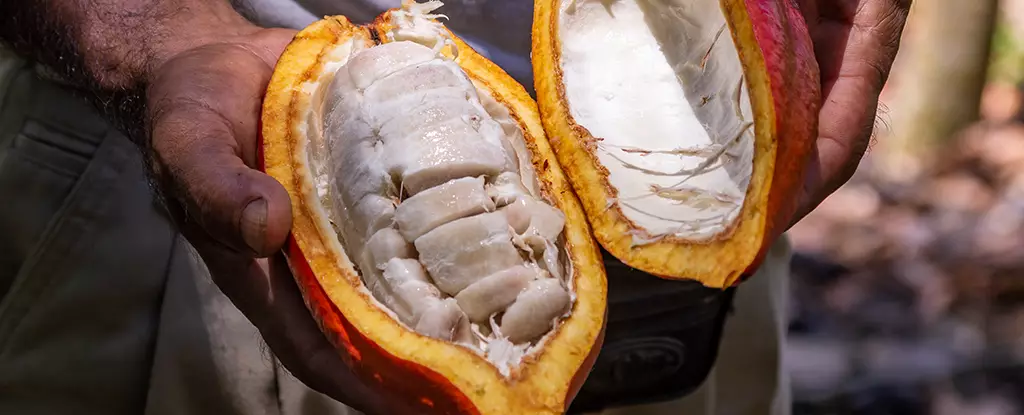We all love indulging in a piece of chocolate now and then, but have you ever stopped to think about what actually goes into making this beloved treat? Unfortunately, the reality is that traditional chocolate recipes are filled with excessive amounts of sugar and saturated fats, overshadowing any potential health benefits that the cacao bean itself may offer. However, a team of researchers from ETH Zürich in Switzerland has decided to take a step back and reevaluate the classic chocolate recipe.
Rather than relying solely on cacao seeds and refined sugar, these researchers have looked towards the entire cacao fruit for a solution. This fruit, which typically goes to waste during the chocolate-making process, contains valuable materials such as fiber that can be beneficial in creating a healthier alternative. By isolating and drying the fiber-rich inner wall of the cacao pod, and combining it with juice from the pulp, a sweet gel was produced. This gel could potentially replace the heavily refined carbohydrates usually added to chocolate recipes, resulting in a product with lower sugar content and higher fiber.
Fiber is a key component in maintaining a healthy digestive system and preventing rapid spikes in blood sugar levels. By incorporating fiber from the cacao fruit into chocolate, the researchers have not only enhanced the nutritional value of the treat but also improved its overall health profile. This innovative approach to chocolate production opens up new possibilities for creating sweets that are both delicious and good for you.
In taste tests conducted with trained volunteers, the whole-fruit chocolate proved to be just as sweet as traditional chocolate, despite containing significantly less sugar. By replacing refined sugar with the fiber-rich endocarp powder and pulp juice, the researchers were able to achieve a perfect balance of sweetness and flavor. This not only demonstrates the feasibility of creating a healthier chocolate alternative but also highlights the potential for reducing the sugar content in other confectionery products.
In addition to the health benefits of this new chocolate recipe, there are also environmental advantages to consider. By utilizing parts of the cacao fruit that are normally discarded, this approach reduces organic waste and provides cacao farmers with an additional source of income. This not only benefits the farmers themselves but also contributes to a more sustainable and environmentally friendly chocolate production process.
While the concept of whole-fruit chocolate shows promise, there are still some obstacles to overcome before it can become a mainstream product. Adapting the entire value chain, from cocoa farmers to consumers, will require investment in infrastructure and production facilities. However, with a growing market of health-conscious consumers looking for alternatives to traditional sweets, there is potential for this innovative chocolate variety to make its way onto supermarket shelves in the near future.
The reinvention of the chocolate recipe by incorporating whole cacao fruit offers a healthier, more sustainable option for chocolate lovers. By focusing on reducing sugar content and increasing fiber, this new approach not only improves the nutritional profile of chocolate but also presents opportunities for cacao farmers and the environment. The future of chocolate is bright, with the potential for a low-sugar, high-fiber alternative to revolutionize the confectionery industry.


Leave a Reply